2013 - Carnegie Mellon University
2013 - Carnegie Mellon University
2013 - Carnegie Mellon University
Create successful ePaper yourself
Turn your PDF publications into a flip-book with our unique Google optimized e-Paper software.
in my mind for going against the grain. A true humanitarian of<br />
sorts. A man whose work has touched hundreds, if not thousands,<br />
of people across the United States. I am of course talking about the<br />
cashier at the café of the International Spy Museum in Washington<br />
DC. This man is the only man in my entire life that has approached<br />
me as a fellow Hispanic in a random public setting. His first words<br />
to me were “¿De cuál país?”, “What country are you from?” I was<br />
so surprised by this flash of Spanish I didn’t immediately respond.<br />
Eventually, like an idiot, I responded that I was from America. He<br />
laughed at this and asked “No your heritage. What country are<br />
your parents from because I know that you are Hispanic?” The<br />
smile on my face must have been a mile wide as I explained to him<br />
that I was predominantly Guatemalan. We chatted for a few minutes<br />
and after we were done he stated “Have a good one, brother.”<br />
With this experience there is hope! And I will probably cherish this<br />
experience until the day that I die, sad as it is.<br />
So how does all of this relate back to Dr. King? I hope that<br />
my light hearted style hasn’t detracted from the point that I have<br />
been trying to get across here and that is skin color and presumptions<br />
about skin color affect everyone. In his “I Have a Dream”<br />
Speech, Dr. King states “I have a dream that…[we] will one day<br />
live in a nation where [we] will not be judged by the color of [our]<br />
skin but by the content of [our] character”. Dr. King was a brilliant<br />
and compassionate man and with this quote it is easy to see that he<br />
wanted his words and ideas to apply to everyone – not just to African<br />
Americans, not just to Caucasians, everyone. No one should<br />
have insults or slurs thrown at them just because they look like a<br />
certain race. No one should have to validate themselves or their<br />
heritage to their ethnic brothers just because they don’t look the<br />
same. We should all be like that great humanitarian, the cashier at<br />
the International Spy Museum – blind to skin color but at the same<br />
time sensitive to each other’s heritage.<br />
College Prose, 3rd Place<br />
American Jeans<br />
By: Connie Chan<br />
Kindergarten - 1997<br />
In Marysville Elementary School’s cafeteria, I stared at the<br />
unfamiliar, layered food item in front of me: a tan domed piece of<br />
bread atop a slice of slippery pink meat, a perfect square of vibrant<br />
yellow cheese, and another piece of bread (except this one was flat).<br />
That day’s lunch menu read “turkey sandwich.”<br />
The simple entrée was exotic compared to the foods I was<br />
used to in San Jose, California, my birthplace and home until my<br />
parents decided to load up our 1992 Honda Civic and migrate to<br />
Dorothy’s land—Marysville, Kansas to be exact.<br />
I looked around at the other kids, trying to gauge how to eat<br />
my food. Most grabbed this “sandwich” by two hands, with their<br />
thumbs on the bottom and other fingers digging into the top. They<br />
passed around a red bottle and a yellow bottle, squirting large globs<br />
of sauce on the turkey. Some were more creative and traced designs<br />
onto the edible canvas. By the time they were done, the sauce fell<br />
over the sides of the sandwich, plopping like paint on a palette on<br />
their food trays.<br />
American cuisine was still quite foreign to me, growing up<br />
in my parent’s yet-to-be-assimilated home, which smelled of ginger<br />
and sesame oil rather than vanilla and butter. I immersed myself in<br />
American culture the only way I knew how: through imitation. Assuming<br />
my neighbor’s condiment waterfall was the typical portion,<br />
I placed a generous dollop of red in the center of my sandwich,<br />
topped by another heavy dollop of yellow.<br />
The lunch lady on duty saw our well-dressed burgers and<br />
frowned in disapproval. “Don’t play with your food,” she said. Play?<br />
Several of my peers giggled at their exploited sandwiches, which<br />
they never planned on eating; the sandwiches were nothing more<br />
than amusement for kindergarten children. I had been duped. Embarrassed<br />
at my misunderstanding of their entertainment as normalcy,<br />
I pushed down on the spongy top bread to hide my sauce of<br />
38 39



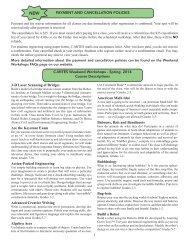
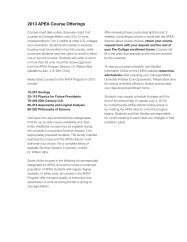

![Pittsburgh Neighborhoods [.pdf] - Carnegie Mellon University](https://img.yumpu.com/22011290/1/190x115/pittsburgh-neighborhoods-pdf-carnegie-mellon-university.jpg?quality=85)
![Curriculum Vitae [.pdf] - Carnegie Mellon University](https://img.yumpu.com/20737100/1/190x245/curriculum-vitae-pdf-carnegie-mellon-university.jpg?quality=85)
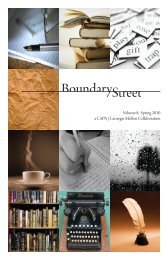
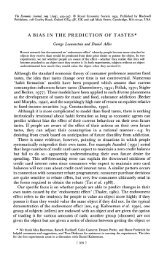
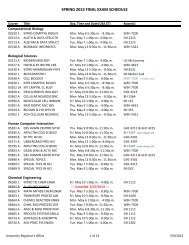
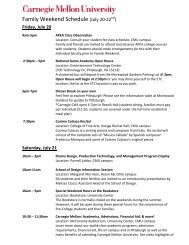
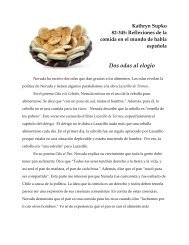


![May 2012 [.pdf] - Carnegie Mellon University](https://img.yumpu.com/12198417/1/190x253/may-2012-pdf-carnegie-mellon-university.jpg?quality=85)
